Staying active at home during COVID-19
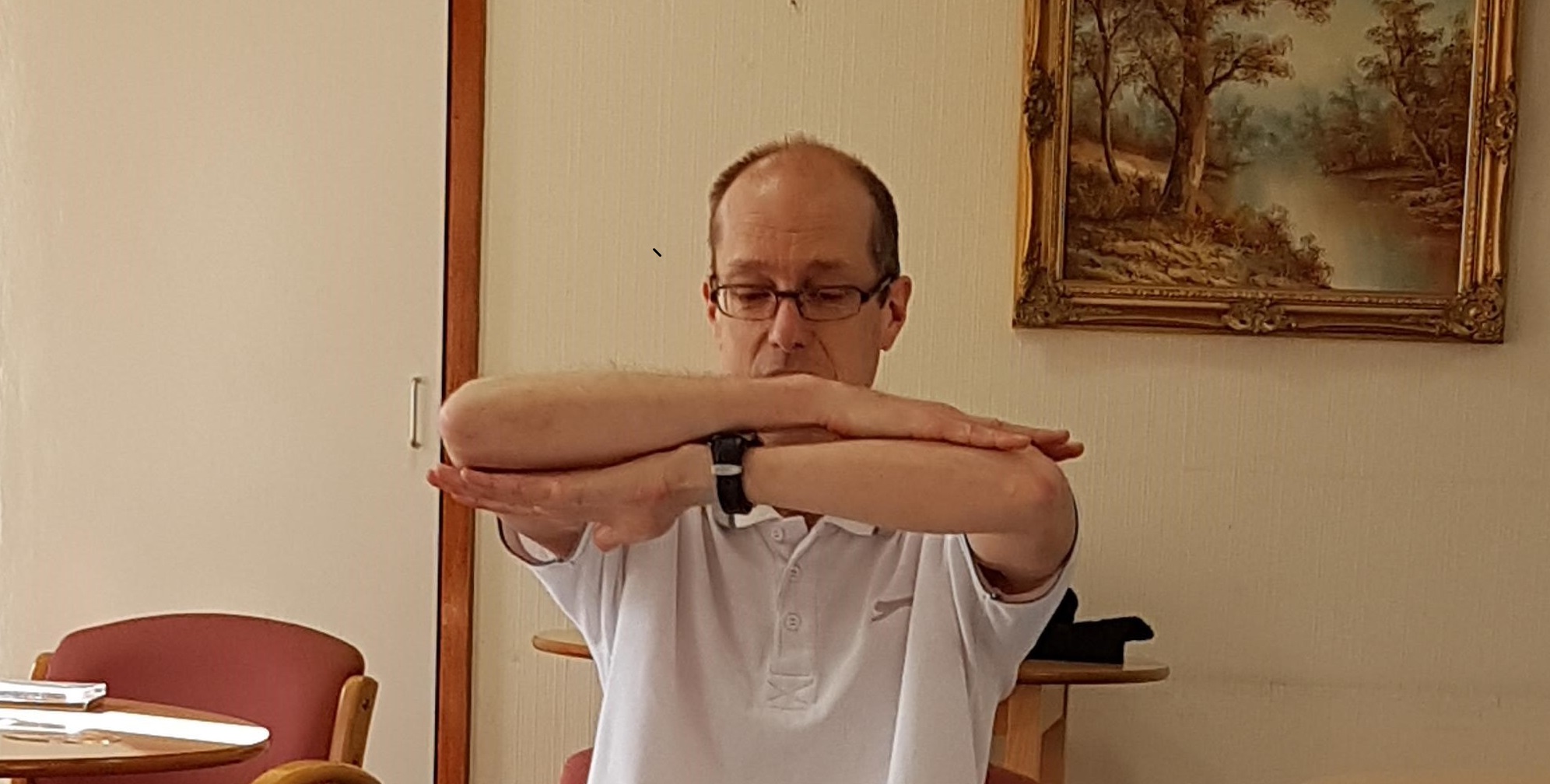
Published on 31 March 2020 11:00 PM
Some timely advice from Lucy, our Falls team physiotherapist.
During this time when we have been asked to stay in doors to help our NHS manage during the COVID-19 pandemic, you may find that you are more sedentary. With this comes a risk that you become deconditioned – gradually loosing muscle strength, stamina and flexibility.
It is essential that you aim to exercise every day. Current restrictions allow you to go outside for a walk once a day whilst maintaining social distancing, but if you are unable to or if it is unsafe for you to go outside, we’ve put together some ideas to help you stay fit whilst at home:
1. March on the spot – set yourself a time target: 30 seconds, 2 minutes or 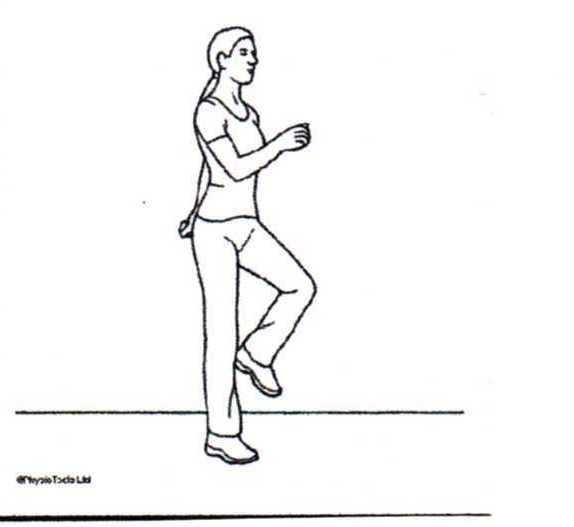 longer depending on your current fitness levels. Rest a hand on the kitchen work surface for support if necessary. Try to keep a steady rhythm, keep leg lift equal and stay on the spot!
longer depending on your current fitness levels. Rest a hand on the kitchen work surface for support if necessary. Try to keep a steady rhythm, keep leg lift equal and stay on the spot!
2. Sit to stand. This is a great leg strengthener. From a dining chair stand up and sit down. Use your arms initially if you need some help but you’re 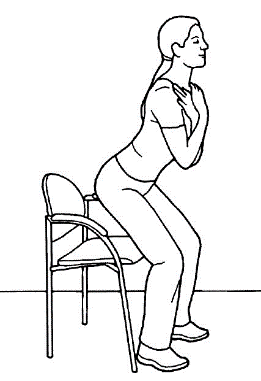 ultimately aiming to stand up and sit down again with your arms folded across your chest. Aim to do 5 consecutively, increasing to 10
ultimately aiming to stand up and sit down again with your arms folded across your chest. Aim to do 5 consecutively, increasing to 10
3. Step-ups. Use the bottom stair tread and hold onto your banister or newel post if necessary. Step up and down leading with the same leg (so step up with 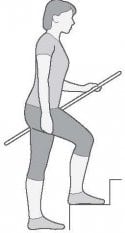 the left, bring your right leg up, then lead down with the left followed by your right leg). Aim to complete 10 repetitions leading with one leg then swap to complete 10 leading with the other leg
the left, bring your right leg up, then lead down with the left followed by your right leg). Aim to complete 10 repetitions leading with one leg then swap to complete 10 leading with the other leg
4. Heel lifts. Use your kitchen work surface to give you light support when doing this exercise. 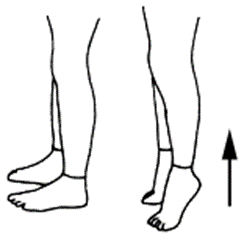 Stand with your legs hip-width apart, feet pointing forwards. Lift your heels, transferring weight onto your toes. Hold for 3 seconds then lower. Aim to make the movement vertical – don’t rock forwards as you go up. This will make sure your calf muscles are doing the work and not your arms. Aim to do 10 repetitions
Stand with your legs hip-width apart, feet pointing forwards. Lift your heels, transferring weight onto your toes. Hold for 3 seconds then lower. Aim to make the movement vertical – don’t rock forwards as you go up. This will make sure your calf muscles are doing the work and not your arms. Aim to do 10 repetitions
5. Wall press-ups. Stand facing a wall, lift your arms so that they are parallel to the floor, place hands on the wall in front.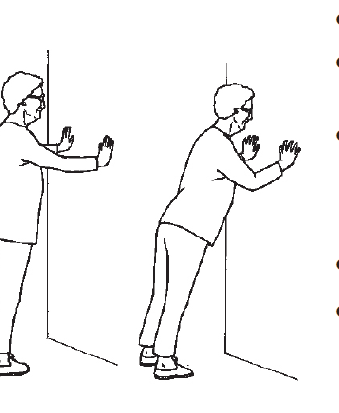 Now take a small step backwards so that you are leaning slightly onto your arms. Keeping your body straight, slowly bend your elbows, bringing your face closer to the wall, then straighten. Aim to complete 5, increasing to 10.
Now take a small step backwards so that you are leaning slightly onto your arms. Keeping your body straight, slowly bend your elbows, bringing your face closer to the wall, then straighten. Aim to complete 5, increasing to 10.
As you improve, aim to extend the time you spend marching, and increase repetitions or include a second set.
Worried about breathlessness? A good indicator of whether you’re getting too breathless is the ‘walk and talk’ test. When exercising at a moderate level, you should be able to hold a conversation whilst exercising. So count out loud when you’re doing your repetitions or sing a song
To add variety ….
There are some resources on-line specifically for older people, but you should just check the pace is suitable for your ability level, and you shouldn’t attempt manoeuvres that you haven’t done for a long while. A few resources that you may find useful are:
‘Get up and go’: a booklet written for people who feel unsteady or are at risk of falling. Include some exercises to help with strength and balance. Can be downloaded and printed off free of charge
https://www.csp.org.uk/publications/get-go-guide-staying-steady-english-version
Clock Yourself - an app aiming to improve balance and reaction time and was the idea of Australian physiotherapist, Meg Lowry. Activities are based around an imaginary clock and the user is given instructions to move towards different positions on the clock face. The sessions become increasingly challenging as you ‘up’ the speed and work through the levels. The app can be downloaded via Google Play or the App Store for a minimal charge.
We want you to stay fit and healthy whilst you are at home but there are some precautions. As a general rule you shouldn’t bend forwards to extremes (so don’t try to touch your toes) particularly if you have osteoporosis. Don’t extend your neck to look at the ceiling as this can cause dizziness. Work at a steady pace and don’t worry if you have some muscle aches after exercise – this is just your body telling you you’ve worked hard. If you make exercise your daily routine, your body should soon get used to it. However, if you have any enduring pain particularly joint pain this may be an indication that you’ve pushed yourself too hard, so ease back a little.
And finally…..
There are organisations that can give you guidance on exercising if you have a specific condition:
British Heart Foundation www.bhf.org.uk
British Lung Foundation www.blf.org.uk
Royal Osteoporosis Society theros.org.uk
Versus Arthritis www.versusarthritis.org
They often have booklets that you can download or print from their websites, so why not take a look?
Life after COVID-19
When this is all over, you might like to consider joining one of our clubs? Many of these include gentle, chair based exercises and are full of younger minded older people. Click here for more details
The picture on the top of the page is of John Rout, Hillingdon's Club Co-ordinator
